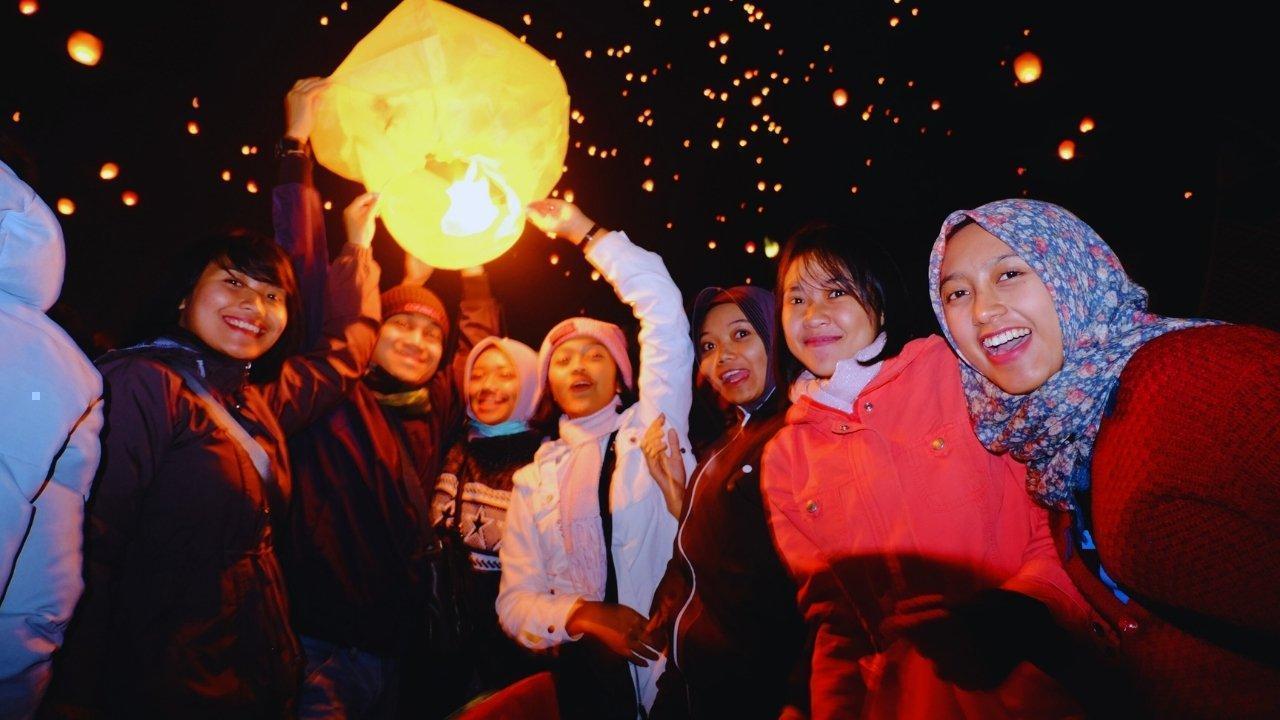
Join 10k+ people to get notified about new posts, news and tips.
Do not worry we don't spam!

Post by : Anis Farhan
In recent years, Asia has witnessed a remarkable shift in the way culture is consumed and monetized. No longer limited to traditional avenues such as film, music, or literature, cultural expression now spans across digital platforms, interactive spaces, and global communities. At the heart of this transformation are Asia’s young creators—musicians posting songs on YouTube, visual artists selling works as NFTs, gamers streaming live content, and storytellers building online communities. These young entrepreneurs are not just entertainers; they are building what experts call “creative economies,” turning cultural assets into income streams while reshaping Asia’s identity on the world stage.
The explosion of digital platforms such as TikTok, YouTube, Instagram, and localized apps like Bilibili in China or Kumu in the Philippines has opened doors for young creators. These platforms allow artists to bypass traditional gatekeepers like record labels and publishers. A teenager with a smartphone can now reach millions across Asia and beyond, monetizing their creativity through ad revenue, sponsorships, or fan contributions.
For example, K-pop’s international popularity owes much to fan-driven platforms and streaming culture. Similarly, anime-inspired art from Japan has found global markets through digital stores and Patreon-backed creators. By leveraging online platforms, Asian youth are ensuring that their cultural products are no longer confined to local audiences but accessible to anyone with internet access.
Social media has transformed from a communication tool into a cultural marketplace. Young entrepreneurs across Asia sell handmade crafts on Instagram, promote traditional cuisines through TikTok recipes, or launch live-stream shopping sessions blending performance with retail.
In Indonesia, young batik designers are reaching international buyers by showcasing their products on TikTok. In Thailand, youth-driven food content is reviving interest in traditional street food while making creators household names. This integration of commerce with cultural storytelling makes social media a critical engine of Asia’s creative economies.
Asia’s cultural richness has become an asset in itself. From Indian classical dance tutorials uploaded on YouTube to Korean webtoons translated into multiple languages, traditional culture is finding new life in digital formats. These efforts are not only preserving heritage but also generating revenue.
Youth are innovating by blending tradition with modern styles. A Vietnamese rapper may infuse traditional instruments into hip-hop beats, while a Filipino creator may reimagine local folklore through comics. Such hybrid forms resonate strongly with both domestic and international audiences, creating fresh cultural narratives that sell.
Beyond individual creators, Asia’s youth are also building creative startups. From fashion brands inspired by local fabrics to gaming studios producing content rooted in regional mythology, the entrepreneurial drive of young Asians is giving rise to a robust cultural industry.
For instance, young entrepreneurs in India are launching companies that turn indigenous storytelling into animation for global audiences. In Malaysia, creative tech startups are developing immersive VR experiences rooted in heritage tourism. These ventures illustrate how cultural content can evolve into sustainable business models.
The global appetite for Asian creativity is at an all-time high. Korean dramas dominate streaming platforms, Japanese anime continues to shape global pop culture, and Bollywood songs trend on TikTok challenges. Young Asians are leveraging this demand by producing niche content that caters not only to local tastes but also global curiosity.
This global recognition is translating into financial opportunities. Asian youth are increasingly securing international brand collaborations, cross-border sponsorships, and global streaming deals. This demand ensures that creative economies are not limited to local audiences but deeply interconnected with global markets.
Despite these opportunities, Asia’s young creators face challenges. Many struggle with financial instability, lack of intellectual property protection, and algorithm-driven pressures of social media platforms. Others face criticism for “commercializing culture” or accusations of cultural appropriation when blending modern and traditional forms.
Moreover, the digital divide in some regions restricts access to the tools needed to monetize creativity. Without affordable internet and technological infrastructure, many talented youth risk being left out of this cultural revolution. Addressing these challenges will be crucial to ensuring inclusive creative economies across Asia.
Recognizing the potential of creative economies, several Asian governments are investing in youth-driven cultural industries. South Korea’s investment in Hallyu, or the Korean Wave, has become a model of how state support can turn local content into global exports. Similarly, Indonesia and the Philippines are promoting cultural startups as part of their economic diversification plans.
Universities and NGOs are also playing a role by offering incubators, training programs, and funding opportunities to young creatives. These initiatives are helping youth not just showcase their culture but also build scalable and profitable businesses.
Looking ahead, Asia’s creative economies are likely to expand further as technology evolves. Virtual reality concerts, NFT-based art markets, AI-assisted music production, and global streaming collaborations will continue to redefine how cultural content is created and consumed.
Youth will remain at the center of this movement. Their adaptability, digital fluency, and ability to blend tradition with modernity position them as the architects of a cultural economy that reflects both Asia’s heritage and its future aspirations.
This article is written for informational purposes only and reflects current cultural and economic trends in Asia. It does not represent the official position of Newsible Asia or any government or institution.










Suranika Roshan Celebrates Bakery Launch with Saba Azad's Support
Suranika Roshan opens her bakery, The Moon Beam Bakery, as Saba Azad shares an encouraging message o

Jets Make History with Unprecedented Special Teams Touchdowns
In a landmark game, the Jets scored two touchdowns on special teams, making franchise history with a

Chargers Secure 25-10 Win Over Steelers with Strong Defense and Herbert's Leadership
Los Angeles Chargers triumphed over the Pittsburgh Steelers 25-10, showcasing a formidable defense a

Rams Triumph Over 49ers; Adams Left with Minor Oblique Injury
The Rams secured a 42-26 win against the 49ers, but Davante Adams left the game in the fourth quarte

Jurel's Stellar Performance Raises Selection Dilemmas for India
Ahead of the South Africa Tests, Dhruv Jurel's impressive form complicates team selection as Rishabh

Ryan Williams Embraces Indian Identity, Joins Football Camp
Ryan Williams has transitioned from Australia to India, joining the national football camp in Bengal